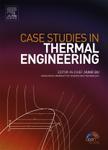版权所有:内蒙古大学图书馆 技术提供:维普资讯• 智图
内蒙古自治区呼和浩特市赛罕区大学西街235号 邮编: 010021

作者机构:Ningbo Univ Fac Maritime & Transportat Ningbo 315211 Peoples R China
出 版 物:《CASE STUDIES IN THERMAL ENGINEERING》 (Case Stud. Therm. Eng.)
年 卷 期:2025年第66卷
核心收录:
基 金:Zhejiang Province Public Welfare Technology Application Research Project [LGG22E080020] Healthy & Intelligent Kitchen Engineering Research Center of Zhejiang Province [ZFGGJ2021-389] Digital simulation design for high-end equipment manufacturing of Shijiazhuang [248790037A] National "111" Centre on Safety and Intelligent Operation of Sea Bridges [D21013]
主 题:Arithmetic superposition index P Thermal sensitivity weighting Multi-objective optimization Kitchen comfort Orthogonal experiments Auxiliary ventilation
摘 要:For the accumulation of pollutants and high-temperature environment in the kitchen, this paper comprehensively considers kitchen pollution emissions, air supply, and thermal comfort, innovatively introduces the concepts of arithmetic superposition index P and human respiratory zone thermal sensitivity weighting, and proposes a multi-objective optimization of kitchen comfort based on the P index. This study adopts a combination of orthogonal experiments and computational fluid dynamics (CFD) simulations to study the exhaust characteristics of range hoods under different structural parameters and compares and analyzes the rationality and effectiveness of different auxiliary ventilation methods in kitchen ventilation systems to propose the optimal solution. The research findings indicate that adjusting the range hood barrier angle significantly reduces kitchen pollution, and workstation air supply markedly improves kitchen and breathing zone comfort. Optimizing range hood parameters (178 degrees angle, 1.544m height, 20.57 Pa pressure) increased PM10 capture efficiency by 25.68 % and reduced PM10 intake fraction by 72.55 %. This also decreased the breathing zone s weighted PMV by 37.17 % and increased kitchen ADPI by 27.7 %. Compared to no auxiliary air supply, workstation air supply decreased kitchen PMV by 53.08 % and breathing zone thermal weighted PMV by 96.99 %. Additionally, it lowered the thermal weighted air age in the breathing zone by 11.98 % and improved ventilation efficiency by 12.55 %, greatly enhancing kitchen comfort.